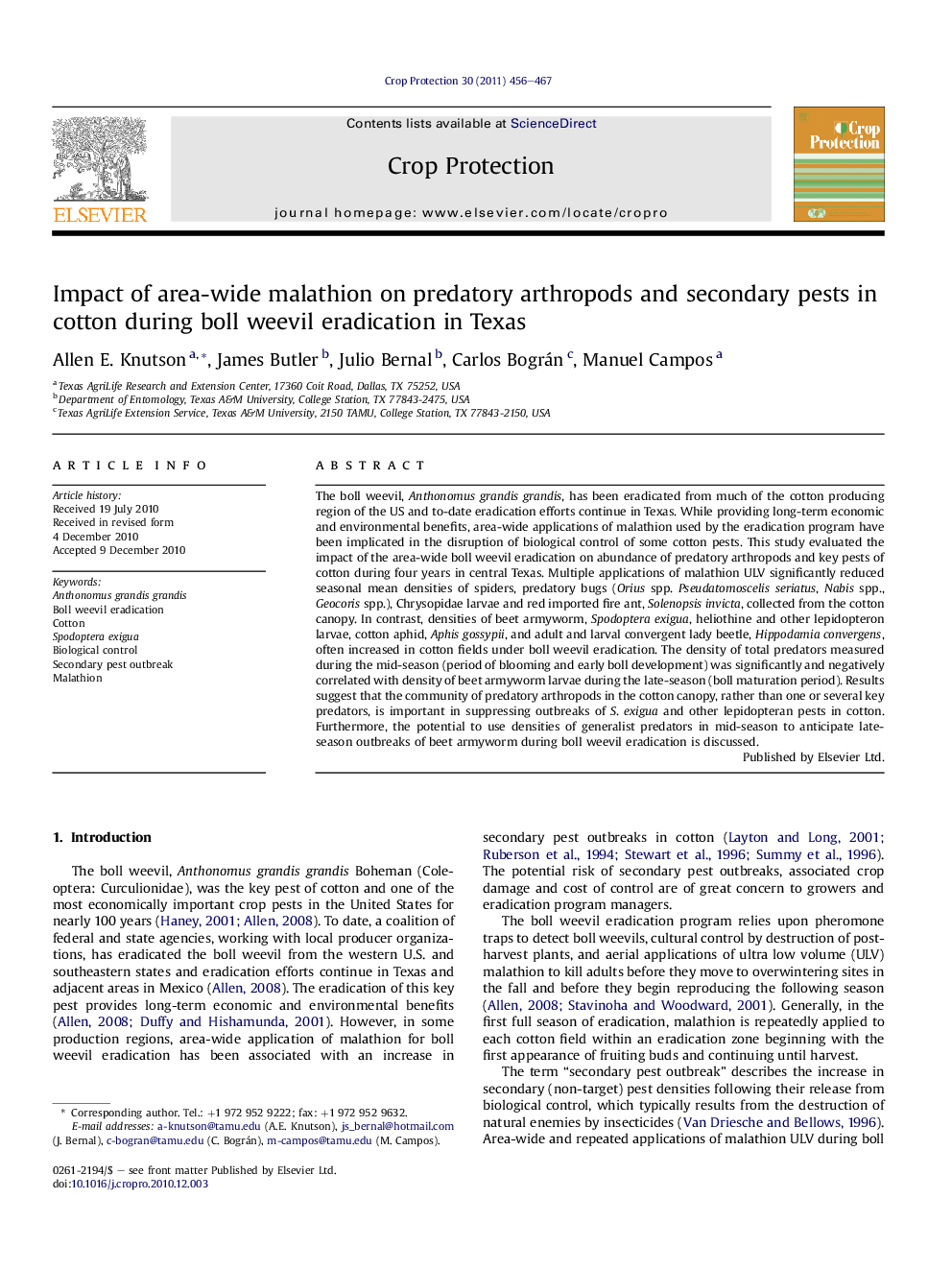| Article ID | Journal | Published Year | Pages | File Type |
|---|---|---|---|---|
| 4507151 | Crop Protection | 2011 | 12 Pages |
The boll weevil, Anthonomus grandis grandis, has been eradicated from much of the cotton producing region of the US and to-date eradication efforts continue in Texas. While providing long-term economic and environmental benefits, area-wide applications of malathion used by the eradication program have been implicated in the disruption of biological control of some cotton pests. This study evaluated the impact of the area-wide boll weevil eradication on abundance of predatory arthropods and key pests of cotton during four years in central Texas. Multiple applications of malathion ULV significantly reduced seasonal mean densities of spiders, predatory bugs (Orius spp. Pseudatomoscelis seriatus, Nabis spp., Geocoris spp.), Chrysopidae larvae and red imported fire ant, Solenopsis invicta, collected from the cotton canopy. In contrast, densities of beet armyworm, Spodoptera exigua, heliothine and other lepidopteron larvae, cotton aphid, Aphis gossypii, and adult and larval convergent lady beetle, Hippodamia convergens, often increased in cotton fields under boll weevil eradication. The density of total predators measured during the mid-season (period of blooming and early boll development) was significantly and negatively correlated with density of beet armyworm larvae during the late-season (boll maturation period). Results suggest that the community of predatory arthropods in the cotton canopy, rather than one or several key predators, is important in suppressing outbreaks of S. exigua and other lepidopteran pests in cotton. Furthermore, the potential to use densities of generalist predators in mid-season to anticipate late-season outbreaks of beet armyworm during boll weevil eradication is discussed.
Research highlights► Multiple applications of malathion are applied area-wide to cotton for boll weevil eradication. ► Densities of arthropod were compared in cotton fields prior to and during eradication in Texas, US. ► Densities of spiders, predatory bugs, and RIF ant were significantly less during eradication. ► Densities of Coccinellidae, aphids, and Lepidopteran larvae were significantly greater during eradication. ► Mid-season predator densities were negatively correlated with late-season Spodoptera exigua densities.
